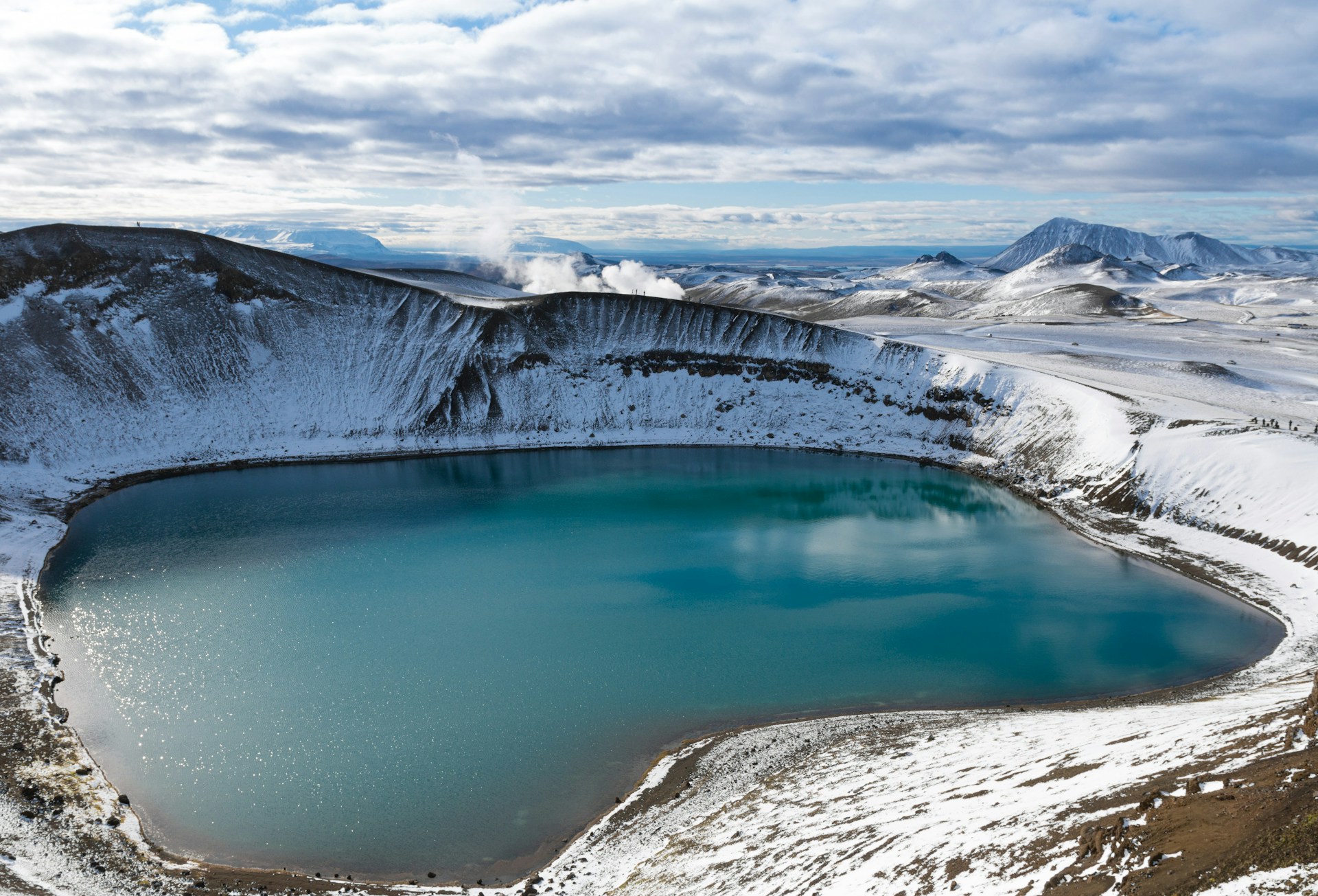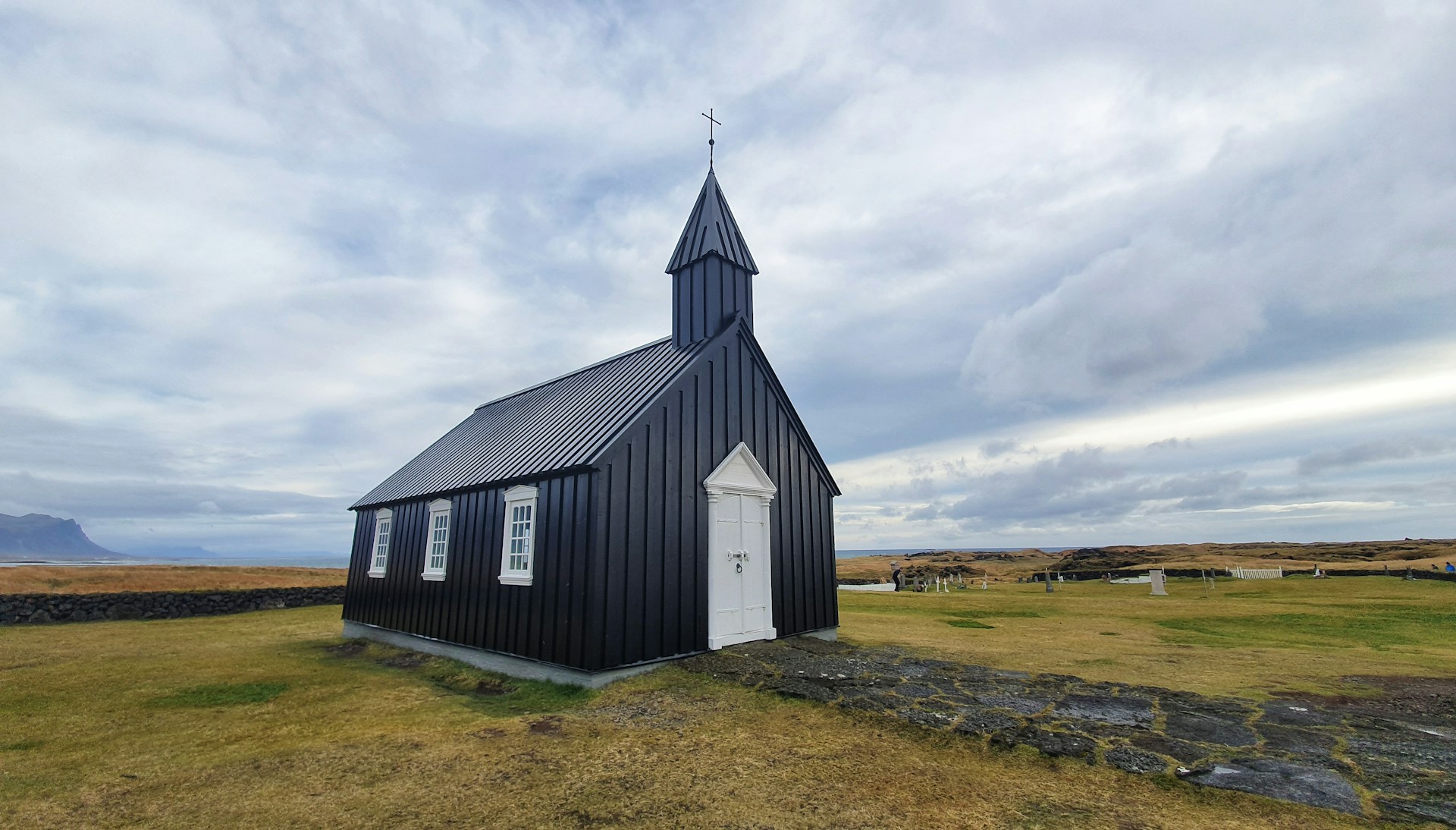Golden Circle tours are a must-do for anyone traveling to Iceland. The tour highlights the best attractions along the country's famous Golden Circle, group tour which includes three main places.
Þingvellir National Park, Geysir, and Gullfoss Waterfall. Þingvellir National Park is a UNESCO World Heritage site and the birthplace of Iceland's parliament.
Geysir, on the other hand, is a geothermal area where you can see an erupting geyser, while Gullfoss Waterfall is one of Iceland's most famous waterfalls.
Golden Circle tours will take you on an unforgettable journey to explore Iceland's natural wonders, and be sure to pack a camera to capture the beauty of and visit the Golden Circle attractions.
This article is all about the best things to do and places you have to visit along Iceland's famous Golden Circle. This is one of the most touristy and visited parts of Iceland, but also one of the most impressive. When you see the waterfalls and geysers of the Golden Circle, it's easy to see why they call it the Land of Ice and Fire.
What is the Golden Circle?
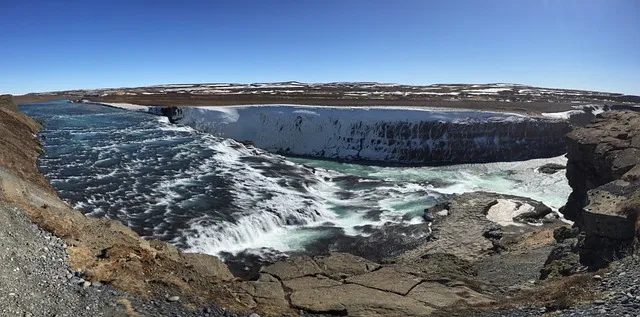
The Golden Circle area is a beautiful area in Iceland that can be easily accessed by car from Reykjavik. It's a popular destination for tourists, especially those who are short on time or have a layover, since it offers a chance to experience many of Iceland's attractions in one place.
The Classic Golden Circle Route Map
To explore the Golden Cricle, use this map which shows the quickest and easiest route. Additionally, below are some Major Key Attractions you can visit along the way.
Map Link :
The Major Attractions of The Golden Circle, Iceland
When you visit The whole Golden Circle in winter by route, make sure to see these three places which are marked with larger stars on the Iceland Golden Circle map shown above. These sights are essential and shouldn't be missed during your trip to The Golden Circle Adventure.
Three stunning locations in Southwest Iceland known as the Golden Circle are:
- Thingvellir National Park,
- The Geysir Geothermal Area,
- Gullfoss Waterfall.
Order Almost everyone does to circle the Golden Circle clockwise, starting with the attractions closest to Reykjavik: Thingvellir, then Haukadalur and then Gullfoss.
The popularity of visiting the Golden Circle in Iceland, is only rivaled by Reykjavik and the Blue Lagoon, and there are many reasons why it is famous.
STOP 1 : THINGVELLIR NATIONAL PARK

Thingvellir National Park is a one-of-a-kind destination in Iceland that boasts both historical and geological significance. It was the first of Iceland's three national parks to be established and is the only one to receive the prestigious UNESCO World Heritage Site designation.
Thingvellir park, located just 29 miles (47 kilometers) from Reykjavik, is the first stop on the Golden Circle tour. It offers a unique opportunity to explore the geological wonders of Iceland and learn about the history of the Icelandic settlers and their unique leaderless society.
Thingvellir National Park's distinct geology stems from its position on the Mid-Atlantic Ridge, a rift valley formed by the North American and Eurasian tectonic plates. This geological feature is exclusively found in Iceland and is most prominently displayed in Thingvellir National Park.
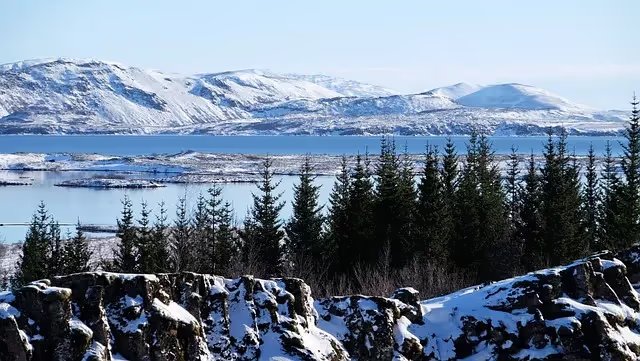
When entering the park from Reykjavik, you'll encounter a sheer cliff which marks the corner of the North American continent. The Eurasian continent is located several miles away, on the opposite side of the park, and is just as stunning to behold when you arrive there. Millions of years ago, the movement of these continents and the resulting magma pocket led to the formation of Iceland.
Iceland's fascinating volcanic activity is due to their continued separation. The landmass of the island is still very young and in the process of formation, which creates a vivid sense of liveliness on the land.
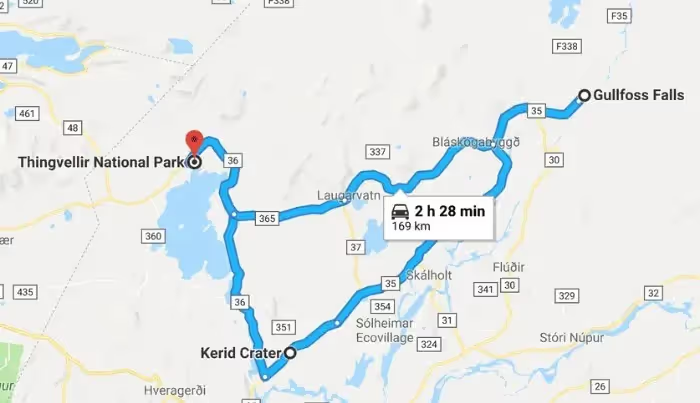
Evidence of this process can be found throughout Thingvellir, the capital city which is characterized by long expanses of lava rock and surrounded by numerous volcanoes that tower over Thingvallavatn, Iceland's largest natural lake.
Vegetation has covered the park since its last eruption more than 2,000 years ago.
The Icelandic landscape is now covered with beautiful and tender moss, which has spread over the lava fields. Additionally, some areas of the region are home to native birch trees and imported pines.The area experiences frequent earthquakes, and each earthquake contributes to the widening of the plates by approximately one inch (2.5 centimeters) annually.
Freshwater from the Langjokull glacier melts and flows underground through porous lava rock into the ravines caused by the earthquakes before eventually reaching Thingvallavatn lake. The water that comes out of the springs in these cracks is crystal clear because of the filtration process that removes any sediment.
The visibility is more than 330 feet (100 meters), enhancing the scenic experience while walking in the area and providing excellent opportunities for magical diving and snorkeling.Although the climate in Iceland may not seem suitable for these activities, advancements in dry-suit technology allow for easy access to the 36 F (2 C) water even in winter.
Multiple times on a two day trip, qualified guides lead groups on an adventure through the stunning Silfra fissure, one of the most beautiful ravines that is gaining popularity.
If you are over the age of sixteen and know how to swim, you can go snorkeling in Silfra. The dry suits provided are buoyant and act as a life jacket, and the gentle current helps you navigate through the fissure. However, if you want to go on a diving tour, you need to be a qualified PADI Open Water Scuba Diver and have experience in dry suit diving.
The diving tour offered here at Silfra, between the tectonic plates, is made even more exhilarating by the knowledgeable guides and the stunning beauty of the underwater world.One of the top ten dive sites in the world is Silfra, according to the vote.

In 2004, UNESCO declared Thingvellir a World Heritage Site. This was not only due to its natural beauty, but also because it held great historical significance for Iceland. Throughout centuries of development, Thingvellir saw many important changes.
The country adopted Christianity in the year 1000 AD due to the fear of violent actions threatened by Norway's religiously devoted monarch, King Olaf I. Additionally, it was the location of various witch trials and other exciting happenings that are described in the Icelandic sagas.
Although the parliament site moved to Reykjavik, the area remained significant to Icelanders. It served as the location for Iceland's declaration of independence ceremony in early evening of 1944 and where the parliament appointed Sveinn Bjornsson as the country's first president.
The popularity of Thingvellir as a destination is due to its rich history, stunning beauty, and unique geology. However, it is important to note that it is just one of the three renowned sites included in the classic Golden Circle route.
STOP 2 : HAUKADALUR GEOTHERMAL AREA / GEYSIR
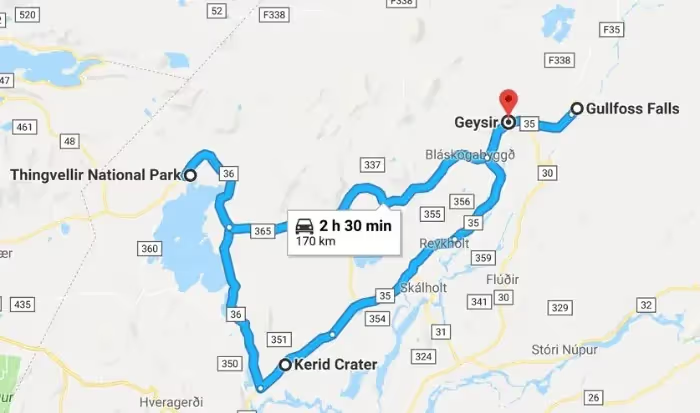
The next destination on the Golden Circle is the Geysir Geothermal Area which is situated in the Haukadalur valley and can be reached in a 37-mile (60-kilometer) drive from Thingvellir. As you make your way there, you will notice steam vents and chimneys, particularly in the village of Laugarvatn which is located midway driving the main golden circle route between Thingvellir and Geysir.
The settlement features a spa that is heated by hot water currents beneath the ground. Additionally, its steam rooms are located on top of bubbling hot pots which can reach an extreme temperature of 140 F (60 C).
The geothermal activity at Haukadalur valley is much stronger and noticeable than other places. One can witness steam rising from a long distance, and the area is home to several hot pools, clay mud pots, and fumaroles. The hills and soil are brightly colored due to minerals present in the area.
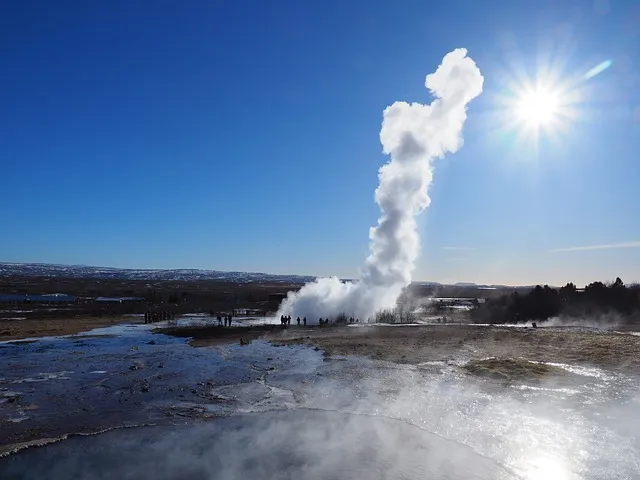
Even without the two famous geysers, the site would still be fascinating. The first geyser, called the Great Geysir, is the one after which all others are named. It is the earliest documented geyser in European literature, and its name comes from the Old Norse verb 'to gush.' Although Geysir doesn't erupt often, its neighbor, Strokkur geyser, goes off every ten minutes and shoots water from 66 to 132 feet (20 to 40 meters) into the air.
Due to geological events and human interaction, the Geysir's activity has decreased significantly. It has been present for approximately 10,000 years and erupts periodically. It typically initiates after an earthquake, but its eruptions are inconsistent and unforeseeable. In the early 1910s, it erupted every half-hour, but by 1916, it had slowed down immensely.
In 1935, Icelanders dug a channel into the silica rim around Geysir's vent to lower the water table and encourage it to erupt more consistently. This was done because they were tired of the landmark's inconsistency.
The channel stopped working again after a brief period due to clogging. However, it was cleaned in 1981, and later it was discovered that Geysir could be made to erupt occasionally by adding soap to it. Environmental impact concerns were raised about this activity, and it was discontinued in the 1990s.
Although Geysir is mostly inactive, it still erupts occasionally and is a spectacular sight. When it does erupt, it's much bigger than Strokkur. In 2000, Geysir erupted and spewed water 400 feet (122 meters) in the air. The only time it has recorded blasting higher than that was in 1845 when it reached an estimated 558 feet (170 meters).
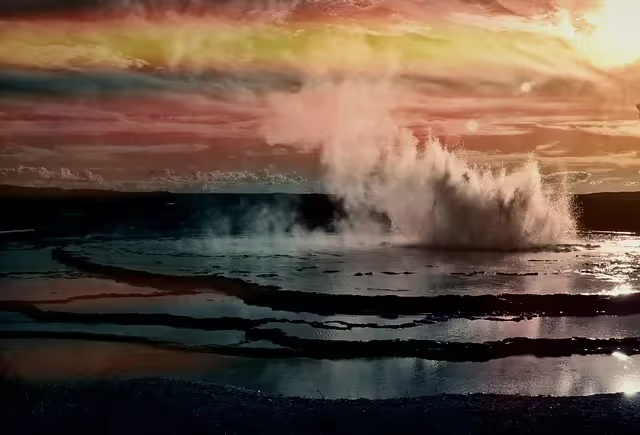
One of the remarkable features of the Golden Circle is the dependable activity of Strokkur, which is conveniently located. Geysers are a scarce natural occurrence because they require distinct conditions to form.
In addition to the mesmerizing hot springs, there's more to explore at the Geysir Geothermal Area. The Geysir Center, located opposite the geysers, offers a variety of locally crafted Icelandic products at its large boutique shop. You can also relish traditional Icelandic cuisine made from nearby produce at the center's various restaurants.
Make sure to respect the Haukadalur valley when you visit and refrain from throwing anything into the hot springs or geysers so you can appreciate the beauty of nature.
Time To Plan Your Trip To Geysir Geothermal Area!
Now you know Geysir Geothermal Area well! It is time to plan your trip.
As we mentioned earlier, there are two ways to visit this Geothermal Area. Either by car or by booking a service.
If you are traveling in your own car, it is up to you! Although, it can cost a bit more.
If you are planning to opt for a service, here's what you need to know.
STOP 3 : GULLFOSS WATERFALL

The Golden Circle's last stop is Gullfoss, one of Iceland's most magnificent waterfalls. Gullfoss is what gives the whole Golden Circle trip its name, as it means "Golden Falls" in English.
The waterfall is situated just a short distance away from Geysir and can be reached within ten minutes by visitors. It is a majestic waterfall located in an old, steep valley. With a height of 105 feet (32 meters), the waterfall comprises of two drops. It is at its most forceful during the summer months when it releases around 4,944 cubic feet (140 cubic meters) of water per second.
Gullfoss is famous for both its stunning power and the rainbow display that appears over the falls on sunny days, enhancing the beauty of the scene. The surrounding area includes a dramatic valley and rolling fields, with a magnificent view of the Langjokull glacier.
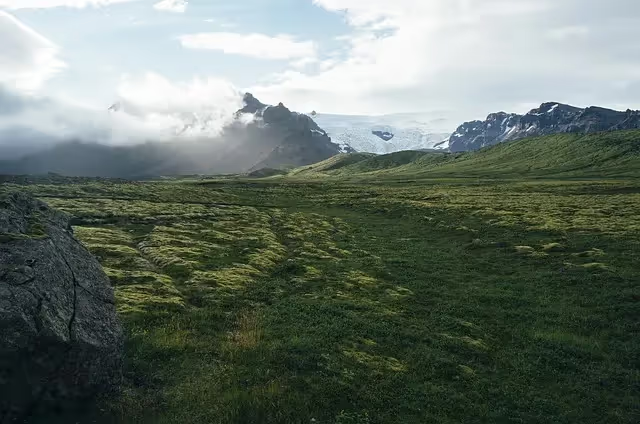
The river Hvita, which originates from Langjokull glacier, cascades down Gullfoss and is known for its glacial springs similar to the ones found at Thingvellir and Geysir Geothermal Area. River rafting used to be a popular activity in this river in Iceland.
Gullfoss is best visited during long daylight hours in summer when the ground is free of ice. During this time, you can walk on a pathway that leads you right up to the falls where you can feel the mist on your face.The photo opportunities are fantastic and you can easily take a few photos or spend several hours admiring the impressive strength of the water, regardless of the season.
Although you can't get very close, observing the partially frozen glacier and watching chunks of ice fall into the abyss is captivating. If you plan on visiting during winter, make sure to wear plenty of warm layers, as the winds blowing over the glacier can be very sharp, and the mist spraying off the waterfall is bitterly cold.
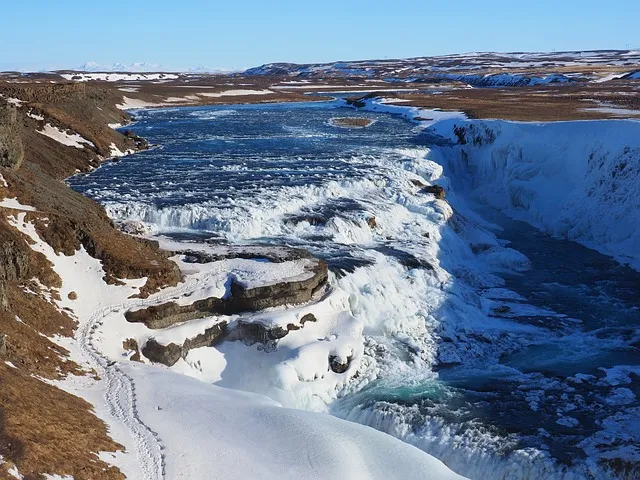
Gullfoss is a popular natural attraction that draws tourists from all over the world. Iceland's tourism industry greatly benefits from this natural wonder, and it's fortunate that it remains well-preserved and unaltered.
The Blue Lagoon is not on the Golden Circle. It can be added to end your day trip, but it is a detour - Gullfoss to Blue Lagoon = 2h drive However, if you are looking for a closer geothermal pool, the Secret lagoon is only 30min drive from Gullfoss
Not everyone has had the intention of protecting nature in Iceland in the past.
Visit Gullfoss With Golden Circle Day Tours!
Golden Circle Day Tours is a well-reputed and reliable name when it comes to Iceland Travel. It offers exclusive yet affordable tours. For your Gullfoss, why not opt for a safe and cost-effective option from the collection of tours by GCDT!
Other Points of Interest Along The Golden Circle
The Golden Circle Iceland Route Map has other side Attractions extra points of interest to visit along the route. These stops are worth checking out if you've given yourself enough time to explore best route to The Golden Circle.
BRAURFOSS WATERFALL
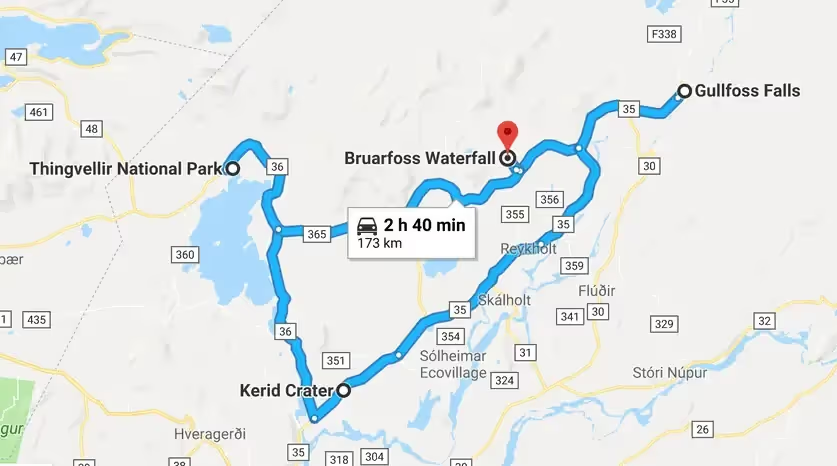
The waterfall Brúarfoss is renowned for its intensely blue hue, earning it the title of "Iceland's Bluest Waterfall".
There are two ways to reach here. The first option is to your own car and follow the trail we have outlined below. Alternatively, you can park your vehicle in the newly constructed Brúarfoss parking lot that became available in April 2023. The parking lot is just a 5-minute walk away from the waterfall.
The hike to Brúarfoss is a 7 km (4.4 miles) round trip. You will get to see multiple smaller waterfalls along the trail in addition to Brúarfoss.
FACTS ABOUT BRÚARFOSS
The Brúarfoss waterfall got its name "bridge waterfall" from a stone archway that used to span across the river. Although the arch collapsed centuries ago, the name remained unchanged. The waterfall gets its striking sky blue color from the Brúará River, which is sourced from the melted glaciers of Langjökull glacier.
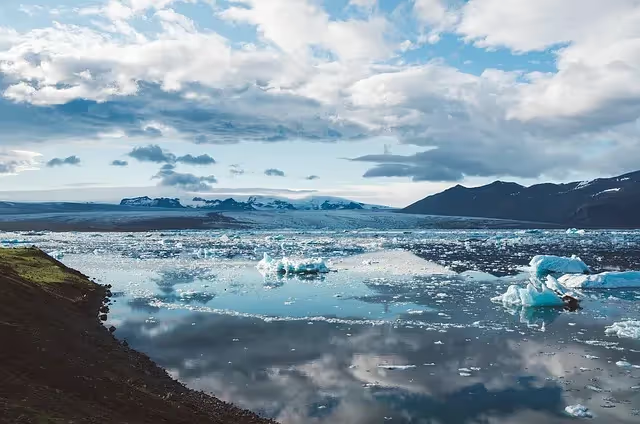
If you're touring around the Golden Circle in southwest Iceland, Brúarfoss is a great addition to your itinerary. It's located right off of the Golden Circle.
Here are the distances and driving times from nearby destinations:
Reykjavik: 90 km, 1.5 hours
Gullfoss: 25 km, 20 minutes
Geysir: 15 km, 12 minutes
Thingvellir National Park: 45 km, 40 minutes
Fludir: 21 km, 22 minutes
LAUGARVATN SPA
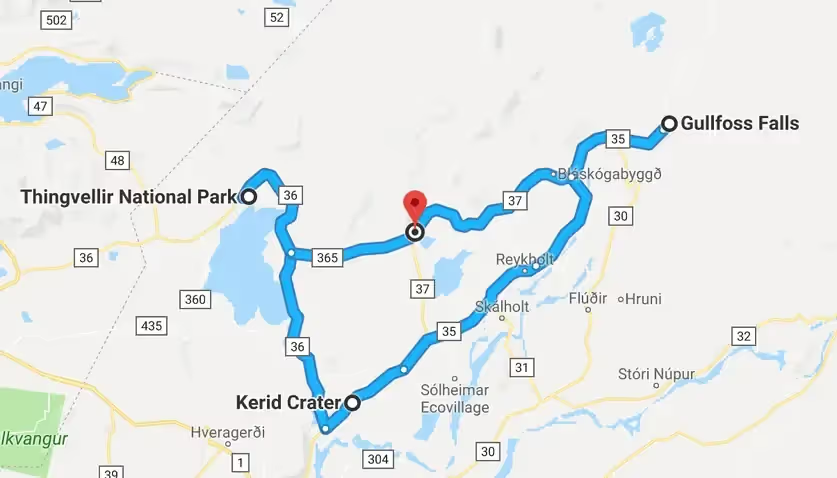
The idea to build a sauna on top of the hot springs in Laugarvatn originated in 1929, when a simple shack with two separate compartments was constructed for the local community to enjoy.
Theugarvatn community has been a geothermal power plant using natural energy to enjoy the therapeutic benefits of geothermal waters for a significant period. However, the current facilities were not available until the year round 2011.

If you're interested in bathing in an Icelandic hot spring, you may want to visit Laugarvatn Fontana spa. It's not as large or luxurious as The Blue Lagoon, but it is much cheaper at around £25 per person.
The Laugarvatn Fontana Geothermal Baths is situated in the heart of Iceland's Golden Circle, a popular tourist route. It offers a one-of-a-kind opportunity to experience the therapeutic properties of geothermal springs. Visitors can relax in a natural pool, indulge in steam rooms with bubbling hot springs, or be adventurous and take a dip in the invigorating lake
KERID CRATER LAKE
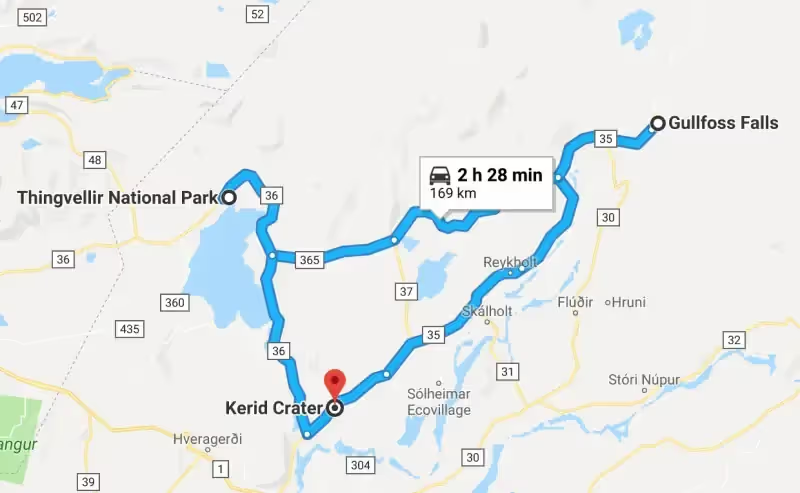
Including all the highlights of Kerid crater lake in your Golden Circle route will make it a circular route on the map instead of a linear route. This way you won't have to see the same scenery twice. Although many people tend to skip Kerid lake, in my opinion, it's a great shame because the scenery is remarkable.
You can visit a vibrant crater lake that offers a striking contrast between the red volcanic rock and the vivid blue water inside it for a fee of 300ISK (roughly £2). It only takes around 30 minutes to explore, the other half a day of tour including a stroll around the lake and some clicks of the unusual site. However, note that there are no restrooms or cafes available on the premises.
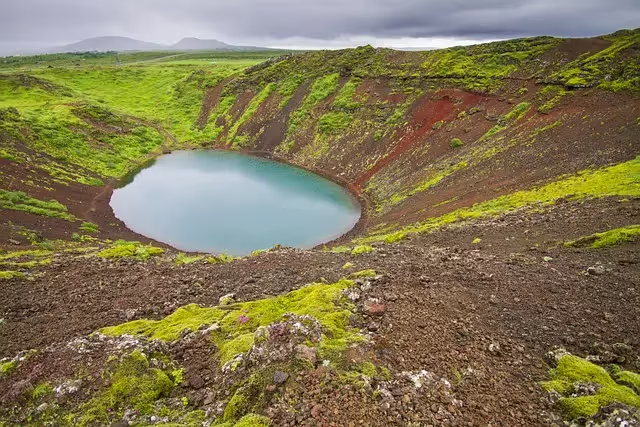
In Iceland, lakes aren't just stunning on their own. They are often situated within a volcanic caldera. Sometimes, a small lake, however, this isn't enough. That's why Iceland offers Kerid Crater Lake, a vividly blue lake within a volcano and surrounded by unusual red volcanic rock.
Kerid, situated in the southern region of Iceland along the Golden Circle, stands out from other crater lakes due to the formation of its caldera. Most crater lakes form from explosions, but it's believed that Kerid's volcano was formed when the central magma simply ran out and the resulting empty chamber collapsed. Despite the geological details, the lake boasts a mesmerizing array of colors that appear almost otherworldly.
Visit Kerid Crater With Golden Circle Day Tours
Kerið Crater is truly worth a visit. Plan your trip to Kerið with Golden Circle Day Tours. GDCT is well-known both locally and internationally for providing guided tours.
Book a reliable guided tour at an affordable rate. Plus, GDCT has a whole collection of Iceland tours that you must check out. Let your Icelandic adventure begin.
We highly recommend checking out our Golden Circle Classic and Northern Lights Mystery Tour.
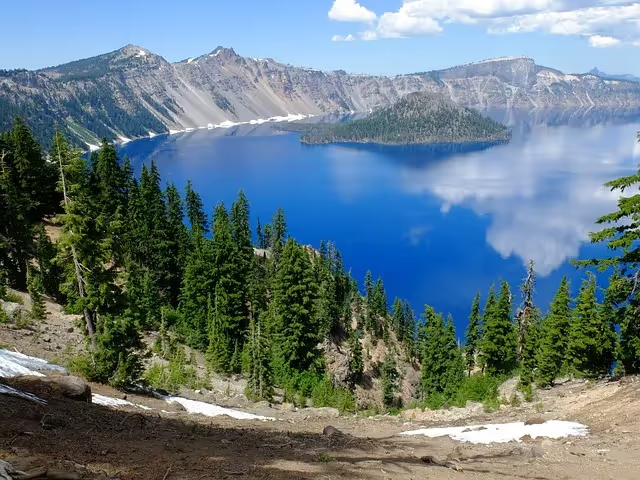
Affordable & Adventurous Golden Circle Day Tours
Each tour comes with its own mix of adventurous activities.
Here are one guided Golden Circle tours.
1 - Classic Golden Circle Tour Iceland (ISK8990 Per Person)
Simply book your tour and leave the rest to Golden Circle Day Tours!

.jpg)

